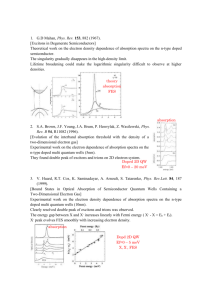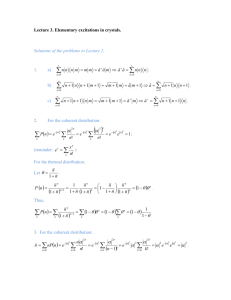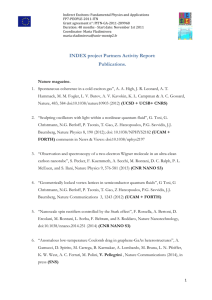Electron Density Dependence of Optical Spectroscopy of GaAs
advertisement
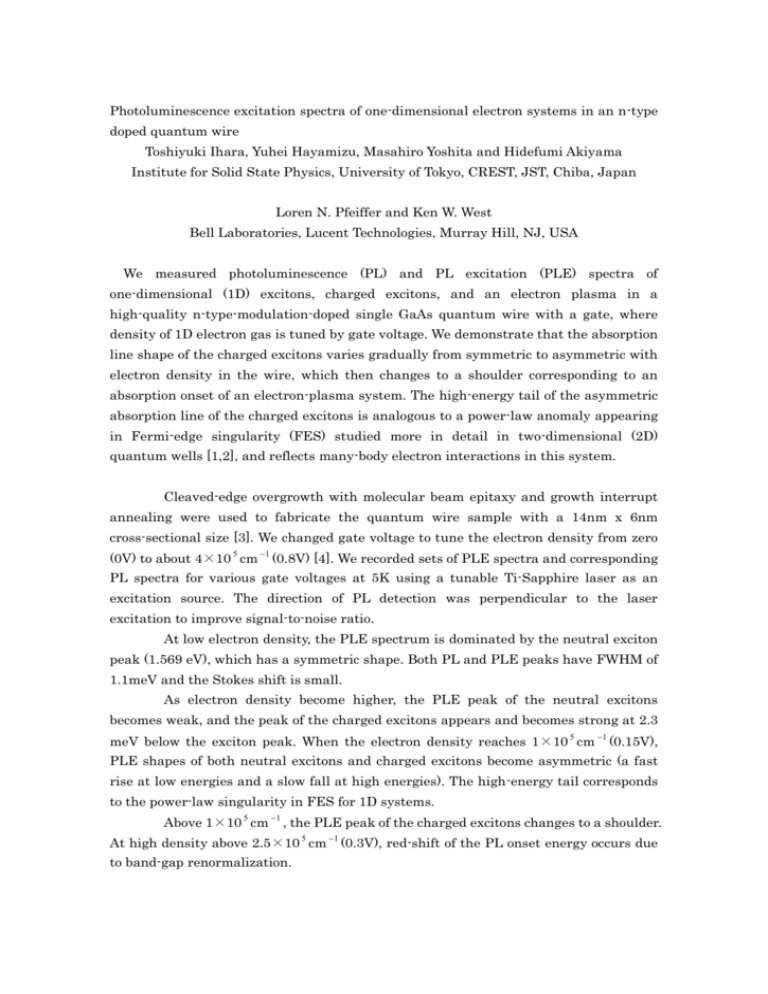
Photoluminescence excitation spectra of one-dimensional electron systems in an n-type doped quantum wire Toshiyuki Ihara, Yuhei Hayamizu, Masahiro Yoshita and Hidefumi Akiyama Institute for Solid State Physics, University of Tokyo, CREST, JST, Chiba, Japan Loren N. Pfeiffer and Ken W. West Bell Laboratories, Lucent Technologies, Murray Hill, NJ, USA We measured photoluminescence (PL) and PL excitation (PLE) spectra of one-dimensional (1D) excitons, charged excitons, and an electron plasma in a high-quality n-type-modulation-doped single GaAs quantum wire with a gate, where density of 1D electron gas is tuned by gate voltage. We demonstrate that the absorption line shape of the charged excitons varies gradually from symmetric to asymmetric with electron density in the wire, which then changes to a shoulder corresponding to an absorption onset of an electron-plasma system. The high-energy tail of the asymmetric absorption line of the charged excitons is analogous to a power-law anomaly appearing in Fermi-edge singularity (FES) studied more in detail in two-dimensional (2D) quantum wells [1,2], and reflects many-body electron interactions in this system. Cleaved-edge overgrowth with molecular beam epitaxy and growth interrupt annealing were used to fabricate the quantum wire sample with a 14nm x 6nm cross-sectional size [3]. We changed gate voltage to tune the electron density from zero (0V) to about 4×10 cm 5 1 (0.8V) [4]. We recorded sets of PLE spectra and corresponding PL spectra for various gate voltages at 5K using a tunable Ti-Sapphire laser as an excitation source. The direction of PL detection was perpendicular to the laser excitation to improve signal-to-noise ratio. At low electron density, the PLE spectrum is dominated by the neutral exciton peak (1.569 eV), which has a symmetric shape. Both PL and PLE peaks have FWHM of 1.1meV and the Stokes shift is small. As electron density become higher, the PLE peak of the neutral excitons becomes weak, and the peak of the charged excitons appears and becomes strong at 2.3 meV below the exciton peak. When the electron density reaches 1×10 cm 5 1 (0.15V), PLE shapes of both neutral excitons and charged excitons become asymmetric (a fast rise at low energies and a slow fall at high energies). The high-energy tail corresponds to the power-law singularity in FES for 1D systems. Above 1×10 cm 5 1 , the PLE peak of the charged excitons changes to a shoulder. At high density above 2.5×10 cm 5 to band-gap renormalization. 1 (0.3V), red-shift of the PL onset energy occurs due [1] G. Yusa, H. Shtrikman, and I. Bar-Joseph, Phys. Rev. B 62 (2000) 15390. [2] M. Takagiwa and T. Ogawa,J. Phys. Chem. Solids. 63 (2002) 1587. [3] L. N. Pfeiffer, K. W. West. H. L. Stormer, J. P. Eisenstein, K. W. Baldwin, D. Gershoni, and J. Spector, Appl. Phys. Lett. 56 (1990) 1697. [4] H. Akiyama, L. N. Pfeiffer, A. Pinczuk, K. W. West, and M. Yoshita, Solid. State. Commun. 122 (2002) 169.
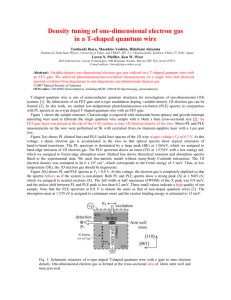
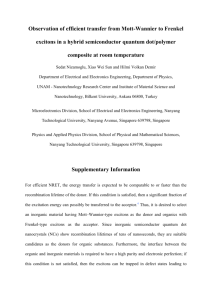

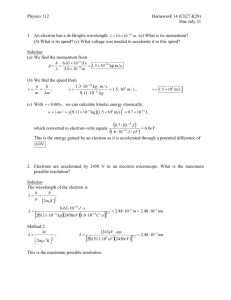
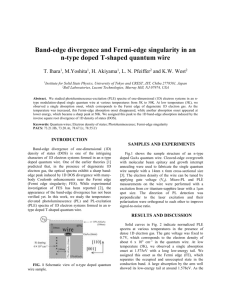


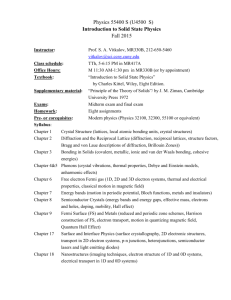




![[Book Title], Edited by [Editor`s Name]](http://s3.studylib.net/store/data/007775765_1-8faeaa1679738ee06354ecdecefb0a50-300x300.png)
